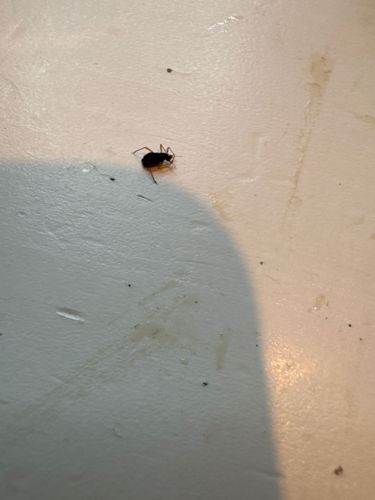Springtail
Scientific Name: Not a single scientific name as 'Springtail' refers to an order with many species in it, but common genera include 'Isotoma' or 'Hypogastrura'.
Order & Family: Order Collembola
Size: Typically very small, ranging from 0.2 mm to 10 mm in length, with most common species being less than 3 mm.

Natural Habitat
Springtails are ubiquitous and found in various moist environments, including soil, leaf litter, decaying wood, compost, under bark, and in damp indoor areas like bathrooms and basements.
Diet & Feeding
They primarily feed on decaying organic matter, fungi, algae, bacteria, and sometimes plant roots, especially in damp conditions.
Behavior Patterns
Springtails often jump when disturbed using a furcula, a spring-loaded organ tucked under their abdomen. They are found in moist environments and are decomposers, playing a role in nutrient cycling. They are most active in humid conditions.
Risks & Benefits
Springtails are generally harmless to humans and are not known to transmit diseases or bite. They can sometimes be a nuisance indoors if populations become high, indicating excessive moisture. Ecologically, they are highly beneficial as decomposers, contributing to soil health and nutrient cycling.
Identified on: 8/19/2025